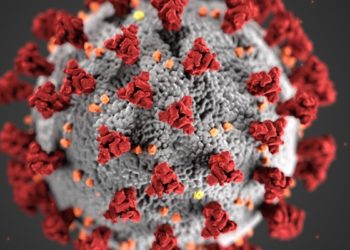Different variants presenting with different presentations amongst children with COVID-19 infections
1. In children presenting to the emergency department (ED) with a COVID-19 infection, children with the Omicron variant were more likely to present with fever, lower respiratory symptoms, and systemic manifestations than children with earlier variants.
Evidence Rating Level: 2 (Good)
During the COVID-19 pandemic, the emergence of variants of concern (VoC) with varying transmissibility patterns and symptoms have influenced the course of the pandemic. The most recent VoC, Omicron, has a propensity to infect the upper airways, with differing symptoms and a lower mortality compared to the delta variant. However, there have been no reports of symptom prevalence and disease severity of the latest VoC, and this study aimed to quantify and compare symptoms, emergency department chest radiography, treatment, and disposition across dominant SARS-CoV-2 variants. This prospective observational cohort study recruited children tested for acute SARS-CoV-2 infection who presented for care at a Canadian urban pediatric emergency department between August 2020 and February 2022. The primary outcome studied was the presence and number of presenting symptoms from illness onset until study enrollment. Overall, 1440 participants had positive test results for SARS-CoV-2 infection. Testing for VoC was performed on 388 participants (26.9%), which identified 158 (40.7%) Alpha, 177 (45.6%) Delta, and 46 (11.9%) Omicron variants. Among the participants, fever, cough, and rhinorrhea were the most common individual symptoms. Patients with Alpha variant infection were least likely to be drowsy, and have conjunctivitis, oral changes, rhinorrhea, and sore throat. Patients with Delta variant infection most often had conjunctivitis, cough, and upper respiratory tract infections. Patients with Omicron variant infection most often experienced drowsiness, fever, and shortness of breath. In total, patients with the Alpha variant had the fewest total number of symptoms. Further analysis found that the Omicron and Delta infections were often associated with fever and cough. In addition, notably, the Delta infection was associated with the reporting of upper respiratory tract symptoms, while the Omicron infection was associated with lower respiratory tract symptoms. Overall, among children positive for SARS-CoV-2 who presented for care in pediatric emergency departments across Canada, symptom profiles differed based on etiologic variants. Children with Omicron infection were more likely to present with fever, lower respiratory tract symptoms, and systemic manifestations when compared to earlier variants. A major limitation of this study is the selection bias, as children with symptoms associated with COVID-19 infection were more likely to be tested. The findings of this study are important to characterize the symptoms of the current predominant strain to guide management in children presenting to the emergency department with suspected COVID-19 infection.
Click to read the study in JAMA Network Open
Image: PD
©2023 2 Minute Medicine, Inc. All rights reserved. No works may be reproduced without expressed written consent from 2 Minute Medicine, Inc. Inquire about licensing here. No article should be construed as medical advice and is not intended as such by the authors or by 2 Minute Medicine, Inc.



![siRNA against antithrombin alleviates symptoms of hemophilia [PreClinical]](https://www.2minutemedicine.com/wp-content/uploads/2015/04/clot-CCWiki-350x250.jpg)



![Macitentan better than placebo for preventing progression of pulmonary arterial hypertension [SERAPHIN Trial]](https://www.2minutemedicine.com/wp-content/uploads/2013/08/ca68dc0329bef0b42ccae7b6656a0f_gallery-75x75.jpg)